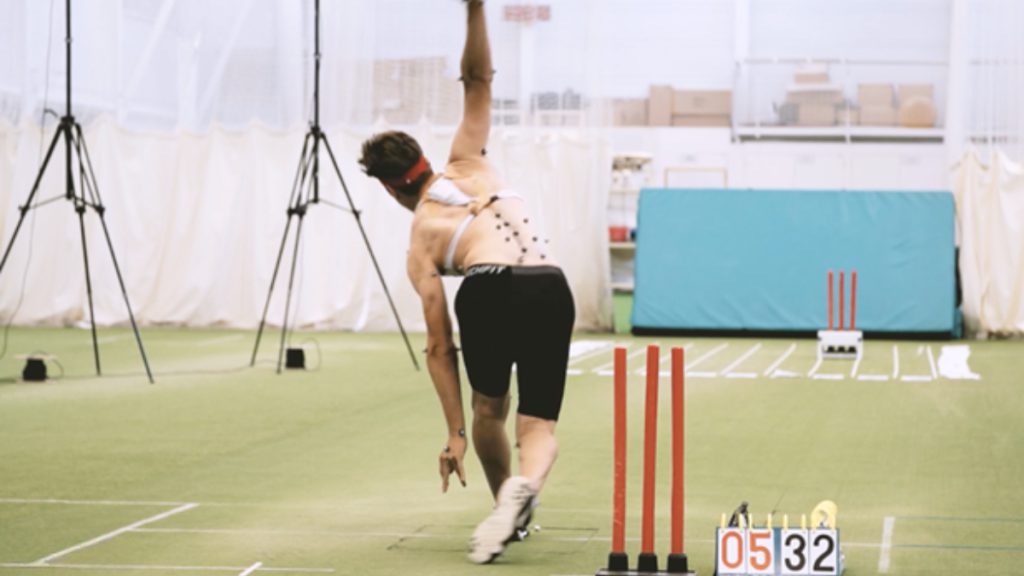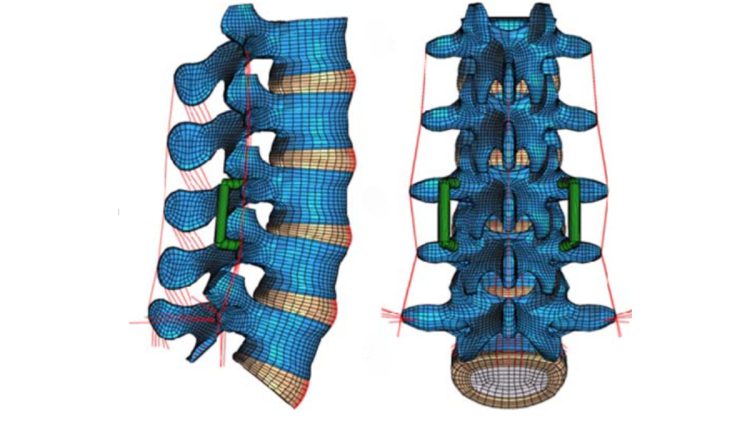Sports, regarded as a cornerstone of physical health and cognitive well-being, particularly manifests in cricket as a globally celebrated discipline, notably cherished in Pakistan. The recent revival of international cricket and the inception of the Pakistan Super League (PSL) in the country have elevated it as a preeminent source of entertainment. However, the dynamic nature of sports entails inherent injury risks, with fast bowlers in cricket being notably vulnerable. Their susceptibility arises from the complex biomechanics involved in their high-speed ball delivery, encompassing extended run-ups, specialized arm actions, and consequential high-impact interactions with the playing surface. Common injuries in this demographic include strains in the hamstring musculature, ankle sprains, contusions, thrower’s elbow, and lumbar bone spine injuries (LBSI). Addressing these risks necessitates a nuanced approach involving biomechanical analysis, targeted conditioning, and strategic load management to ensure the sustained performance and longevity of fast bowlers in cricket.
Although Lower Back Stress Injuries (LBSI) comprise of 3% to 12% of total injuries in cricket still it is crucial to address this because of its effect on fast bowlers’ performance, player’s well-being, and their retention in international games. The lumbar bone experience high stresses during fast bowling due to cyclic twisting, bending, rotation, and impact forces. If the fatigue resulting from these stresses is coupled with insufficient rest and inadequate recovery time for the fast bowler, it may lead to the initiation, propagation, and ultimately failure of cracks, resulting in a lumbar bone stress fracture commonly called as back stress fractures.
Back stress fractures are threatening for fast bowlers, causing them significant pain, restricted range of motion (ROM), and reduced accuracy and bowling speed. They will then require prolonged rest and rehabilitation for bones to heal properly. What if the fast bowler knows how his bowling style adversely affects his spine and become the reason for spine fractures, if any? What if he could prevent the injury from even happening through making changes in his bowling style and practice? For prevention of injury, understanding the biomechanics of the player body during the sports activity becomes a foremost step. Therefore, this study gives the opportunity to understand the bowling styles as a function of spine fracture.
The forefront of injury prevention lies in comprehending the biomechanics of the player’s body during sports activity. Hence, an opportunity is presented in this study to delve into bowling styles as a determinant of spine fractures. This study is conceived by the biomechanics research group at SINES, headed by Dr Zartasha Mustansar, who is an Associate Professor at SINES NUST. Her PhD student, Engr. Haider Ali is embarking on producing quality research to understand how biomechanics can be effectively utilized in the Sports.
From Cricket Australia Injury Report for year 2016 to 2017, incidence of LBSF was 3.6% with an average of 2.1% for 10 years from 2007 to 2017. However, to date no study has been reported for Pakistani fast bowlers for the risk assessment of LBSF. Hence, risk assessment of LBSF using computational biomechanics and devising of preventive measures for Pakistani fast bowlers will be a good area for research to benefit the fast bowlers in Pakistan making them perform at their best without risk of any injury. The determination of the load on the spine during fast bowling is rather a complex task. In fast action and combination of the fast runups, jumping and landing on feet at the crease with high impact on ground while throwing the ball at high speed, bending of the back while posing for an action, and twisting of the body becomes the load to the body of the player. The recurrence of bowling in cricket also plays its part in loading the human body.
At SINES NUST, we’re using MoCap technology to understand the stress on a bowler’s back when they bowl. Imagine multiple cameras to record how fast bowlers move during real games and practices. These details include how their joints bend, how fast they move, and how quickly they accelerate. Then, we use a branch of science called biomechanics to turn this information into numbers that represent the forces (stresses) and twists (strains) happening on the lower part of their spine while they bowl. It’s kind of like figuring out how much strain their back goes through from the moment they start running to the point when they release the ball and even afterward. This helps us estimate the stress and pressure on the bowler’s back throughout the entire bowling process.
“This research will provide a nuanced understanding of the relationship between fast bowling styles and lumbar spine stress, facilitating targeted interventions for injury prevention and performance optimization in Pakistani fast bowlers”.
It is aimed to achieve following objectives:
- Analyze the impact of various fast bowling styles on the lumbar spine, aiming to identify specific factors contributing to the risk of Lumbar Bone Stress Fractures (LBSF).
- Quantify the load exerted on the lumbar spine during the complex biomechanics of fast bowling, considering elements such as fast run-ups, jumping and landing, high-impact ball throws, back bending, and body twisting.
- Investigate the influence of repetitive bowling in cricket on the cumulative load experienced by the player, emphasizing the unique combination of individual bowling styles and body structures among Pakistani fast bowlers.
It is quite challenging to achieve these objectives, knowing that this is the first of its kind research in Pakistan where biomechanics is an under rated field of study. However, taking the lead initiative, we hope to achieve some good results in the near future. Application of principles of biomechanics to transform kinematic data into kinetic data, specifically focusing on quantifying the forces and torques experienced by the lumbar spine throughout the entire bowling process is the key to this research. Simulation platform and advanced image processing will also be used in parallel with this to support our research objectives.

Our strength area, in numerical techniques, like finite element analysis allow us to dig more deeper into replicating these results in a virtual representation of the lumbar spine and simulate the mechanical behavior of its components similar to what is shown in figure 2 (Source: https://doi.org/10.1007/s00586-010-1386-x). This approach permits us to quantify stress, strain, and deformation patterns within the spine during various phases of the bowling action. One of the key challenges in finite element modeling that we face is the accurate representation of the human spine’s anatomical and related mechanical properties. This involves modeling the vertebrae, intervertebral discs, ligaments, and other relevant structures as one assembly.

The preliminary results indicated that the spine experienced localized stress concentrations, which could be a potential precursor to spinal injuries.
The research gap covered by this study is very important for reshaping the sports research landscape. Our findings may unveil the vulnerability of the lumbar spine to microfractures and the potential for long-term damage resulting from the cumulative cyclic loading over a bowler’s career. Using image-based biomechanics, this revelation could pose a significant future concern, impacting the well-being and career longevity of cricket bowlers. Exploring these insights may pave the way for proactive measures and interventions to safeguard the health and longevity of bowlers in the evolving landscape of cricket.
This research project is undertaken by Engr. Haider Ali (PhD Student at SINES) and Supervised by Dr. Zartasha Mustansar (Project PI).
The author is an Associate Professor and Head of Biomechanics Lab at School of Interdisciplinary Engineering and Sciences (SINES), National University of Sciences and Technology (NUST). She can be reached at [email protected].
Research Profile: https://bit.ly/3PwDsEM

![]()


